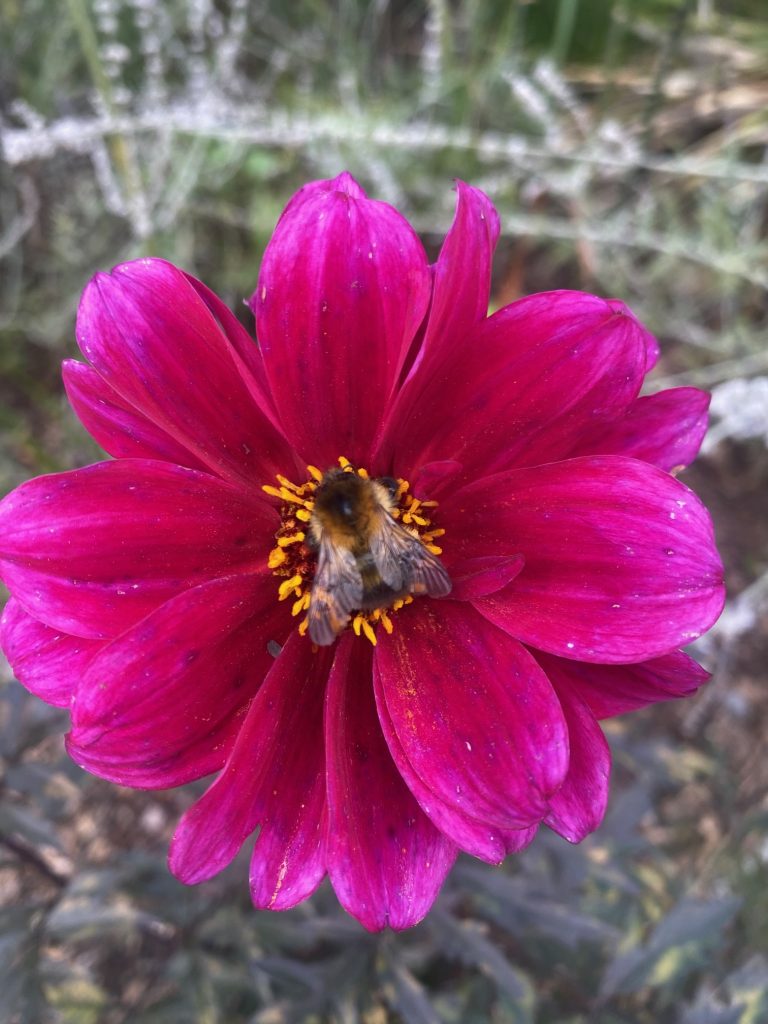You might think that peak pollinator season is over for this year, but that’s not true. Right now there are still a few pollinators seeking late forage to complete their life cycle. That means that they might still need some pollen, but also that many of them need nectar. Most adult pollinators use nectar to fuel their activity. Even a few flowers can make the difference.
Don’t put the garden to bed
If you’ve always ‘put the garden to bed’ please hold-fire. Or at least leave some things if they are still in flower. Have a close look around the garden and you are sure to find a few flowers still in bloom. Maybe it’s a stem or two of verbena bonariensis. That’s a great pollinator plant and very rich in nectar. Or perhaps you’ve got a few dahlias still flowering? If you can see the centre of the flowers then the pollinators can still reach the nectaries.

Leave the hollow stems
Don’t forget many of our solitary bees nest in hollow stems, so if you do cut the stems back please don’t shred them or add them to the bonfire? Inside may be lots of baby bees hunkered down before they emerge next season.
Leave the leaves
If you can leave the leaves under the hedge and behind the shed you are leaving overwintering sites for all sorts of creatures including bumblebee queens that need to have a safe place to rest over the winter.